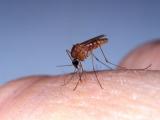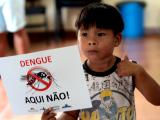Sep 27, 2011
Washington Vibrio outbreak sparks raw oyster warning
The US Food and Drug Administration (FDA) yesterday warned consumers not to eat raw oysters harvested from part of Washington state's Hood Canal area due to an outbreak of Vibrio parahaemolyticus illness in the state. So far three illnesses have been linked to eating oysters from the area and two other cases are suspected. No hospitalizations or deaths have been reported. The illnesses were linked to oysters harvested from Hood Canal growing area 4 between Aug 30 and Sep 19, the FDA said in a statement. Washington officials have temporarily closed the growing area, and commercial harvesters and dealers who received oysters from the site have recalled their products, which were distributed to 23 states and China, Indonesia, Taiwan, and Thailand.
Sep 26 FDA statement
WHO assessing Pakistan's dengue outbreak
A World Health Organization (WHO) team arrived in Pakistan on Sep 25 to assess a growing dengue epidemic that is especially bad in the country's Punjab province, the Express Tribune, based in Karachi, reported yesterday. WHO experts, in the country at the request of Pakistan's government, are also slated to help train medical personnel about treatment and insect-control measures and provide supplies such as insecticide sprays, treated tarps for displaced people in camps, and mosquito netting. Over the past few months the outbreak has sickened at least 6,000 and killed more than 20 people in Punjab, the country's most populated province, according to a Sep 22 report from the Integrated Regional Information Networks (IRIN), part of the UN Office for the Coordination of Humanitarian Affairs. The outbreak prompted school closures in Lahore, where officials fumigated and sprayed. Dengue is endemic in Pakistan. In 2010, flooding in Pakistan
triggered outbreaks of dengue and Crimean-Congo hemorrhagic fever.
Sep 26 Express Tribune story
Sep 22 IRIN report
FDA highlights shortages of some critical drugs
More than 200 drugs are in short supply in the United States, and 82% of hospitals surveyed said drug shortages have delayed treatment, according to a CBS News report yesterday that could hold lessons for pandemic planners concerned about supply chains and critical drugs. The Food and Drug Administration (FDA), which held a meeting yesterday on the issue, said that shortages of drugs have tripled in the last 5 years, with drugs for oncology, anesthesia, and critical care leading the list. CBS News cited shifting production priorities away from lower-profit generic drugs, manufacturing and quality-control issues, and hospital hoarding as factors playing a role in the shortages. The FDA has scheduled a Sep 30 webinar to discuss the issue.
Sep 26 CBS News report
Notice for
Sep 30 FDA webinar
Vietnam battling surge of hand, foot and mouth disease cases
An outbreak of hand, foot and mouth disease (HFMD) in Vietnam has killed 111 children and sickened more than 57,000 this year while forcing the closure of more than a dozen kindergartens, the Associated Press (AP) reported today. Ten kindergartens in the southern province of Hau Giang recently were closed for 10 days for cleaning and to check the students' health, said Nguyen Van Muoi, head of the province's preventive health center. He said four other kindergartens, which serve children aged 1 to 6 years, had been closed but reopened last week. The health ministry says more than 2,000 cases of HFMD are being reported weekly, whereas in a typical year the country has up to 15,000 cases and 20 to 30 deaths, according to the story. It said an unusually severe strain called enterovirus 71, which can cause paralysis, brain swelling, and death, has been identified in about a third of sampled cases. The illness involves rash,
mouth sores, and blisters on the hands and feet.
Sep 27 AP story
Zoonotic rotavirus transmission may have occurred in Denmark
Two adults in Denmark were infected in 2006 with a rare rotavirus strain closely related to animal strains, suggesting zoonotic transmission, according to a report today in Epidemiology and Infection. The strain, G8P[14], was found in two patients who lived in the same area, and nucleotide sequences of the VP7, VP4, VP6, and NSP4 genes of isolates from the two people were identical. In addition, phylogenetic analyses showed both viruses closely clustered with rotaviruses of cow and goat origin. The authors conclude, "The high genetic relatedness to animal rotaviruses and the atypical epidemiological features suggest that these human G8P[14] strains were acquired through direct zoonotic transmission
events," which are uncommon.
Sep 27 Epidemiol Infect abstract



















